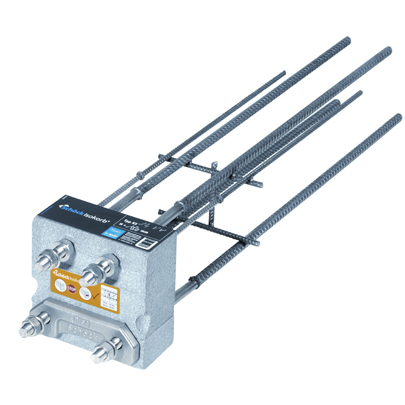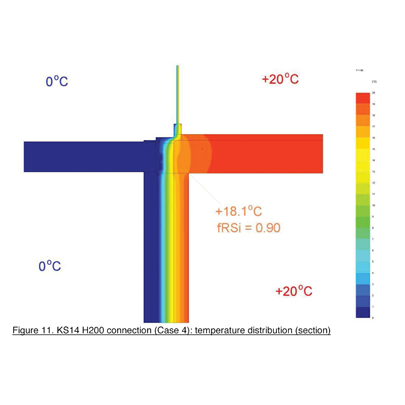Recently there have been misconceptions in some areas of the UK marketplace that certain ‘common solution’ alternatives for concrete-to-steel connections perform just as well as the Schöck Isokorb type KS14 thermal break element. This is not necessarily the case. As a specialist in this sector, Schöck demands extremely high product performance standards and has a strong professional interest in ensuring that alternative solutions comply with the necessary building regulations – and that any performance claims are verifiable.
To bring clarity to the situation, an independent investigation into the various performance criteria concerning the effectiveness of steel balcony connections to concrete slabs has been carried out by the Oxford Institute for Sustainable Development, at Oxford Brookes University. The ‘common solutions’ in question being the direct connection of balcony support brackets to a concrete floor slab using no form of thermal break; a solution using brackets in conjunction with a 10mm ‘thermal pad’; and a further connection solution using a thicker 20mm ‘thermal pad’ .
The OISD found the Isokorb type KS14 to be a superior thermal insulating element for connecting cantilevered steel components to reinforced concrete; while other comparable solutions failed to obtain the minimum amount of performance required by Part L of the Building regulations.
The first step in the independent investigation process was to determine the heat loss, minimum surface temperature – and consequently the temperature factor (fRSI) – resulting from the use of Schöck Isokorb type KS14 thermal break units connecting a steel balcony to a concrete floor slab. The temperature factor (fRSi) is used in the UK to indicate condensation risk as described in BRE IP1/06, a document cited in Building Regulations Approved Documents Part L1 and L2.
Once established, this calculated performance (1) was then compared with that of the three structurally equivalent ‘common solutions’. The following results table presents the minimum surface temperatures and temperature factor (2) for the cases modelled, where the temperature factor used to indicate condensation risk (fRSI) must be greater than or equal to 0.75 for residential buildings.
It is quite clear that the Isokorb KS14 unit, with fRSi = 0.904, exceeds these values by some margin and will therefore meet the requirements of Building Regulations Approved Documents L1 and L2. Further, the results demonstrate that where no unit is used (fRSI =0.681) and also with the 10mm and 20mm pad connections (fRSI =0.713 and 0.706 respectively) – all three would fail against the criteria required for residential buildings.
Specifiers, contractors, developers and those in procurement therefore need to be wary of product performance claims involving bespoke solutions. Often they will be found wanting and the lack of transparency in determining true performance values may well mean a product being installed that is simply not fit for purpose. Due to building site ‘tolerances’ it is vital that thermal product solutions should, at the very least, exceed minimum standards – and even that may simply not be good enough.
Schöck is a leading supplier of innovative thermal product solutions to the international construction industry and maintains its position by investing heavily in wide ranging technical research and product development activities. This is particularly true of its Isokorb thermal break range, which has an unrivalled reputation for its ability to prevent thermal bridging in cantilever connectivity areas and increase the thermal performance of buildings.
View Thermal structural connectors Product Entry



 resized-comp212922.jpg)